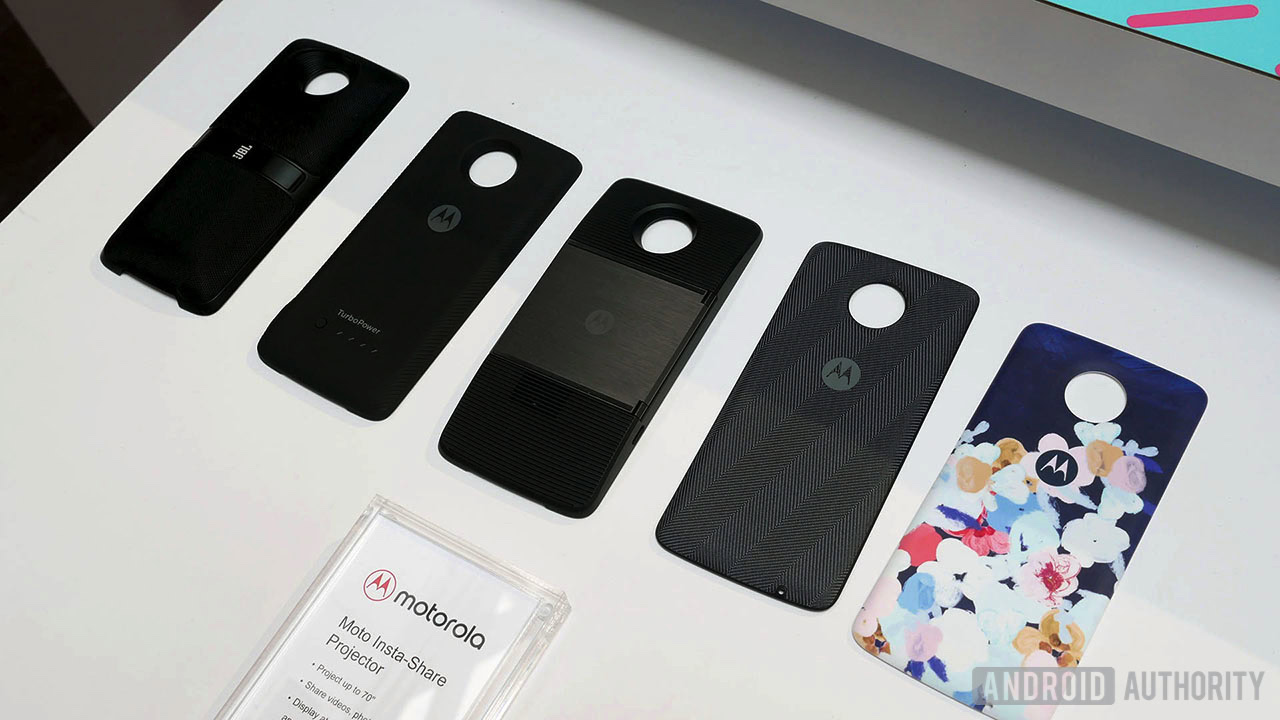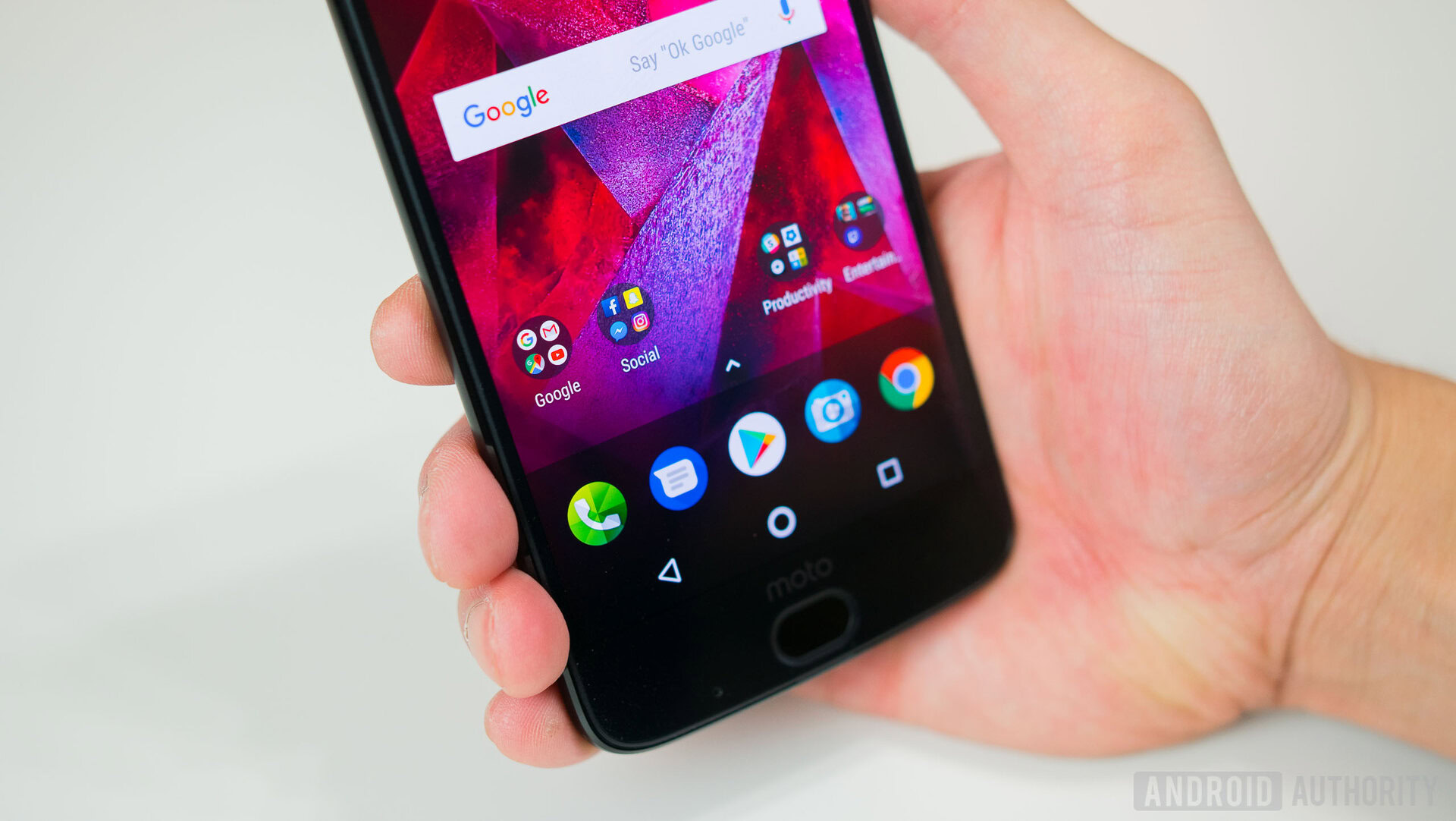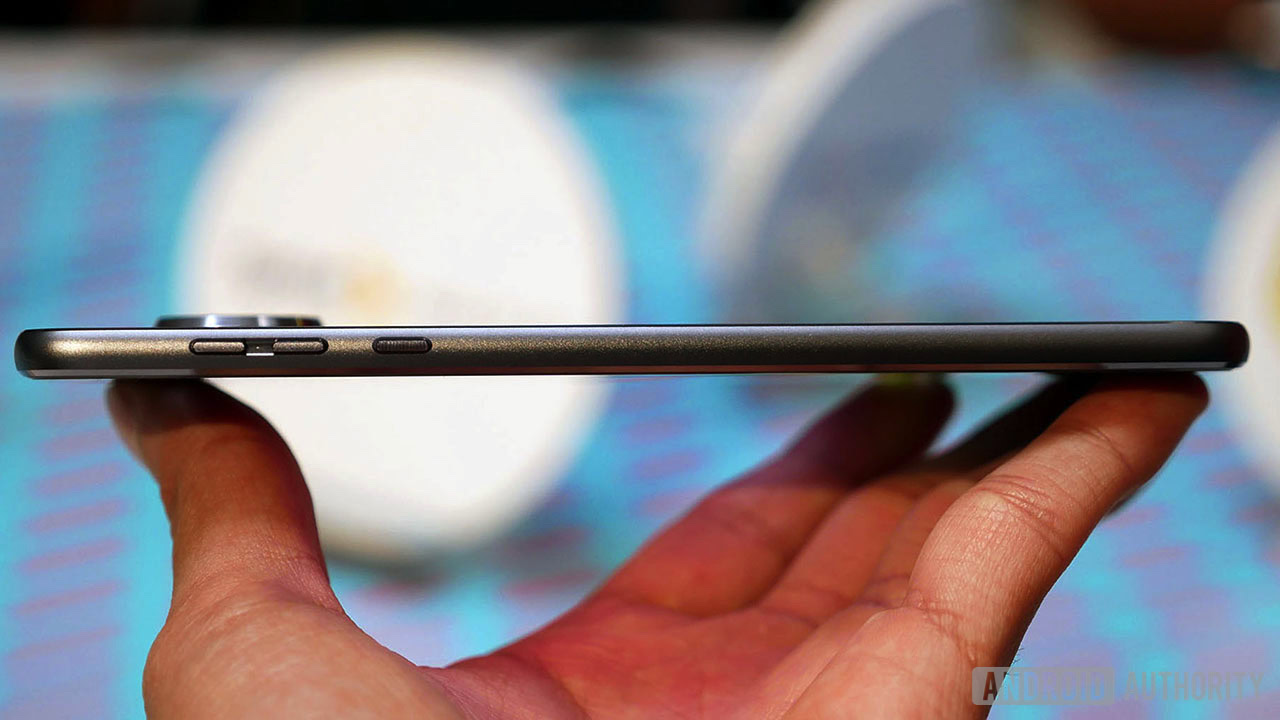Affiliate links on Android Authority may earn us a commission. Learn more.
Moto Z2 Force is skinnier than ever, but why?

I love the idea of modularity, be it in smartphones or anything else. Modular technology allows you to customize a device to suit your preference and, when done right, it can be the far more financially efficient option since you only have to buy what you need.
That being said, there are two sides to every coin. While modularity can be great, it can also be exploited in a number of ways. In smartphones, for example, it could mean that a manufacturer shrinks a phone’s battery capacity to increase the adoption of an external snap-on power pack. Yes, I’m talking about the Moto Z2 Force.

While the Lenovo-owned Moto flagship does look like a solid phone in general, it comes with a couple of questionable decisions when it comes to its spec sheet. Namely, the battery is 22 percent smaller than its predecessor. The official reason for the decrease in battery is that Motorola wanted to bring us a phone that was .9 mm thinner than their previous flagship. To be fair, there’s nothing inherently wrong with Motorola shrinking the battery and releasing a thinner phone, assuming its predecessor was on the bulkier side, but that is not the case.
Last year’s Moto Z Force was just shy of 7 mm thick, and the recently unveiled Moto Z2 Force is just over 6 mm. The problem stems from the fact that the battery capacity of the new device is anything but adequate when compared to its competition, with all other 2017 flagships packing batteries around or above the 3,000 mAh mark. Meanwhile, the Moto Z2 Force comes with a 2,730 mAh battery, as opposed to last year’s 3,500 mAh one.
A battery of this size wouldn’t be an issue for a mid-range phone, but the Z2 Force comes with all the bells and whistles you’d expect from a flagship
A battery of this size wouldn’t be an issue for a mid-range smartphone, but the Z2 Force comes with all the bells and whistles you’d expect from a flagship — Snapdragon 835, QHD display, 4K video recording, and so on. All of these consume a lot of power and with such impressive hardware, users are bound to push it to the limit with heavy games and applications, which further decrease battery life.

So is a smaller battery really that big of a deal? It’s hard to say for sure. According to Motorola, the Z2 Force still manages to last a day on a full charge, and until we put it through a full review we can’t say for certain that the phone hasn’t been optimized to keep up with the competition. But why settle for one-day battery life when the device theoretically could have lasted much longer?
Motorola claims it had to fit a smaller battery in this year’s Force in order to make it slimmer, but why would they want a thinner profile anyway?
Last year’s Moto Z Force was 6.99 mm thick, which is still thinner than almost any 2017 flagship so far. So, it wasn’t a matter of keeping up with trends. In fact, both the LG G6 and the Samsung Galaxy S8 are actually thicker than their predecessors so they could facilitate a bigger battery.
One doesn’t buy such a phone because of its slim looks, but because it can serve them well in just about any scenario
What’s more, the Moto Z2 Force is a shatterproof powerhouse of a device. It’s meant to be rugged, powerful, and highly efficient. One doesn’t buy such a phone because of its slim looks, but because it can serve them well in just about any scenario… not to mention that less of a millimeter is a difference that’s ergonomically unnoticeable.

So let’s throw it out there: Lenovo is currently selling three different external battery Moto Mods and someone has to buy them. What use would people have of them if they already get the desired battery life?
As a hardcore gamer, I’ve seen this model before with the emergence of DLC packs. They started out innocently enough, providing extra content to a finished product, just to grow out of proportion and become the norm for serving users a complete experience in pieces, at the price of what used to be several full games.
Thankfully the smartphone market is far from reaching this point. Modularity has yet to be widely adopted by any OEM and applying this scheme for hardware is much harder than software. Currently, if you don’t fancy buying an external accessory in order to reap all the benefits of your smartphone, you can always go for a non-Moto handset.
If more manufacturers begin producing modular devices, this vicious practice will take off
However, if more manufacturers begin producing modular devices, this vicious practice will take off. At the end of the day, if all high-end smartphones become modular, we’ll have no other choice but to play by the OEMs’ rules and this is when they’ll surely adopt the DLC approach.
You like the LG G6’s dual camera? Buy a $100 dollar mod to snap on the back of your G7 to replace its single-camera setup. You want Google Assistant on your phone? Big G will happily sell it to you on Google Play for ten bucks. What about Samsung’s MST technology for mobile payments? The Korean giant is already considering an external accessory for that.
There is another possible, less sinister explanation for Motorola’s decision, however. Moto Mods, as cool as they may be, are thick. They have to accommodate a range of hardware that isn’t usually found on smartphones due to its size. The JBL SoundBoost 2 and the Hasselblad True Zoom, for example, add about 15 mm to the phone’s profile, and that makes for one bulky device.
Every fraction of the centimeter that can be shaven off is valuable
Therefore, every fraction of the centimeter that can be shaven off is valuable. While not a lot of users have been complaining about last year’s Moto Z Force’s thickness, it’s evident that Motorola is trying to widen its user base. It even made sure to ditch the Verizon exclusivity this year and managed to secure deals with all four major US carriers, making the new model available to a lot of new users.
Perhaps slimming down the phone wasn’t an act of wickedness, but an attempt to make the Moto Z2 Force appealing to more people. However, what Motorola failed to predict is that this move would actually discourage some currently loyal fans from buying the new device.
This move actually discouraged some loyal fans from buying the new device
We can’t know for certain what made Motorola shrink the battery capacity in order to lower the Moto Z2 Force’s profile, and only time will tell whether it was a sound business decision in the long run. In the meantime, make sure to share your impressions of the Moto Z2 Force in the comments. Do you mind the smaller battery at all, or are you okay with acquiring a Mod to get more screen-on time from it?